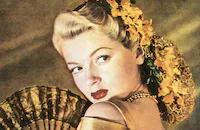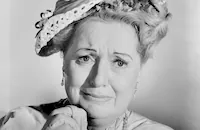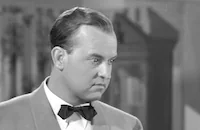Somewhere I'll Find You

Brief Synopsis
Cast & Crew
Wesley Ruggles
Clark Gable
Lana Turner
Robert Sterling
Patricia Dane
Reginald Owen
Film Details
Technical Specs

Synopsis
War correspondents and brothers Jonny and Kirk Davis return to New York in early October 1941 after being thrown out of Germany. Their New York Chronicle editor, George L. Stafford, is angry with them for writing anti-Nazi stories and refuses to print their latest about a Japanese-German alliance. By using a ruse with a dictating machine and enlisting the aid of Stafford's masseur, Charlie, Jonny tricks Stafford into relating the story to the composition room, and when it winds up on the front page, he and Kirk are fired. When Jonny goes to the home of his friends and landlords, Eve and Willie Manning, he is chagrined that they rented out his former room, but is pleasantly surprised to discover the new tenant is a beautiful blonde. Jonny does not remember that three years before he had had a date with the woman, reporter Paula Lane, but stood her up by sending Kirk in his place. Amused, Jonny passionately kisses Paula, but when Kirk arrives, he tells Jonny that he plans to marry her. When Jonny tries to discourage his brother from marriage, he is unsuccessful and quickly whisks Paula out to dinner after Kirk leaves. They go to a Russian restaurant, where they kiss amorously, but she quickly leaves. At home, she learns that the Chronicle has just offered her a job she has always wanted as a war correspondent in Indo-China. When Kirk arrives and shows her an engagement ring, she says that she is not right or good enough for him and reveals that she has always loved Jonny. Although hurt, Kirk tells her to be careful and is skeptical that Jonny cares enough to keep her from going to Indo-China. Later that night, Jonny argues with Kirk, who walks out after Jonny bitterly says that Paula's type "rhymes with champ." The next day, Paula tells Jonny that she is flying to China that afternoon, but instead of stopping her, he tells her that she would be nice to have around, but only for a couple of weeks. One month later, Stafford summons Kirk and Jonny to his office and tells them that Paula is missing in Indo-China. Because Jonny is broke and has been blackballed by Stafford, he and Kirk agree to leave immediately. When they arrive in Hanoi, Kirk has no luck finding Paula, but Jonny, who thinks that the disappearance is a fake, goes to newsman Floyd Kirsten, who knows everything about Hanoi. Kirsten, who is very ill, says he knows nothing, but when he retires to his bed, wealthy Chinese Thomas Chang, who is anti-Japanese and has given Kirsten a home, tells Kirk and Jonny that Paula is at the front. All three then go up river and Chang reveals that Paula has been helping to smuggle Chinese children out of the war zone. When they find her, Jonny is surprised at her state of exhaustion and carries her in his arms when she collapses. For several days, Jonny gently nurses her back to health, still telling Kirk that he doesn't care about her. When Paula awakens she tries to tell Jonny that he really does love her and Kirk sees them kissing. Jonny then tells her that she and Kirk belong together and leaves. Soon Jonny is in Manila, nightclubbing and drowning his troubles in alcohol. He is picked up by big-hearted American Crystal McReagan, who recognizes that he is trying to forget a woman and takes him back to his hotel, where he passes out. The next morning, Paula arrives and Crystal graciously leaves after realizing that Paula is the woman Jonny cannot forget. When Jonny sobers up, Paula tells him that she and Kirk are not going to marry. Jonny cannot resist Paula, but the next morning, Kirk arrives and awakens her with the news that Pearl Harbor has just been attacked. Jonny then orders Paula and Kirk to go to Australia for the paper but says that he will stay in Manila. Months after Paula and Kirk board a ship bound for Australia, Jonny goes to the front and runs into Kirk, who says that they never sailed. He enlisted and she has been working at Field Hospital No. 3. Although Jonny knows that the hospital was bombed the previous night, he tries to keep Kirk from finding out. Soon Kirk and some other soldiers go on a special duty to divert invading Japanese forces. Back at the field camp, Jonny dictates a story about the invasion, recounting, among other events, Kirk's heroic death. Just then Paula, who was not hurt in the attack on the hospital, arrives. When she hears that Kirk is dead, she runs to Jonny, and, despite her grief, sits down and types what Jonny dictates about the fall of Bataan, a story that he says is not finished yet--"there is more to come."

Director

Wesley Ruggles
Cast

Clark Gable

Lana Turner

Robert Sterling

Patricia Dane

Reginald Owen

Lee Patrick

Charles Dingle

"rags" Ragland
Tamara Shayne

Leonid Kinskey

Diana Lewis

Molly Lamont

Sara Haden
Richard Kean
Francis Sayles
Tom O'grady
Leo Abbey
Donald Kerr
Gayne Whitman

Grady Sutton

Dorothy Morris
Ray Deravenne
Luke Chan

Keye Luke

Miles Mander
Eleanor Soo Hoo
Grace Lem
Mrs. Poo Sai
Allen Jung

Douglas Fowley
Benny Inocencio

Van Johnson
Angel Cruz

Keenan Wynn
Frank Faylen
J. Lewis Smith
Joe Bautista
Lee Tung-foo
Crew
Pandro S. Berman
Jerome Bresler
Malcolm Brown
Cedric Gibbons
Horace Hough
Frank E. Hull
Hugh Hunt
Kalloch
Bronislau Kaper
Ray Ramsey
Walter Reisch
Marguerite Roberts
Harold Rosson
Douglas Shearer
Edwin B. Willis

Film Details
Technical Specs

Articles
Somewhere I'll Find You
The real tragedy though happened off screen. After several years of a secretive affair, Gable and the great love of his life, actress Carole Lombard, were married in March 1939. They were one of Hollywood's most popular couples (although they only appeared on screen together once, in No Man of Her Own, 1932), and from all reports greatly devoted to each other and their life away from the Hollywood glamour scene. Following up on the big box office success of the first Gable-Turner pairing, MGM had adapted a popular 1940 Cosmopolitan serial as a wartime drama for the two and went into production in mid-January 1942 under the title "Red Light." Three days into filming the shoot was halted. Lombard, who had traveled to her native Indiana with her mother on a war bond tour, was killed in a plane crash returning to California. Gable was devastated, unable to work or even see people. The studio was prepared to scrap the picture completely, but four weeks after the crash, Gable decided to return to work. He did, however, demand to keep the set closed and kept mostly to himself in his dressing room when not in front of the cameras. The usually fun-loving and sociable Turner restrained herself in deference to her co-star's grief. On the other hand, she did not baby him or display any signs of being maudlin; cast and crew were under the strictest orders not to do so, and those that did were met with Gable's stony silence.
On a lighter note, Turner's look in the picture drew substantial attention. Forsaking her typical high-glamour gloss for the more down-to-earth style of a hard-working war correspondent, she nevertheless managed to keep up an appeal that, as one critic put it, always suggested "that she is looking up from a pillow." MGM's publicity department, perhaps noting the stir caused when Paramount starlet Veronica Lake trimmed her much-copied peek-a-boo bangs to encourage a more practical wartime hairdo, made sure the wire services were on hand to report the shorter, more sensible bob Turner sported for this film. Dubbed "The Victory Hairdo," it caught on quickly; when the story reached England, the studio was contacted for instructions for the coiffure so that British women could adopt the look as a safe and practical way to keep long hair out of the way of defense plant machinery.
Somewhere I'll Find You was a huge success, and the studio indicated there would soon be more Gable-Turner matches to come. But not long after completing principal photography, Gable joined the Army. He would not return to motion pictures for another three years. And his next teaming with Turner would have to wait until Homecoming (1948), another wartime drama revolving around the pair's initial antagonism turning to romance.
Gable's defection to the military left MGM without its top male star. In fact, with so many of its leading actors heading off to war duty, the studio scrambled to find replacements who could prove equally popular with audiences. They found one in a young supporting player in this picture, Van Johnson. Due to a bad auto accident that left him with a metal plate in his head, Johnson was ineligible for service. Although he was uncredited in this movie, within a year he was third billed to Spencer Tracy and Irene Dunne in the war drama, A Guy Named Joe (1943). He quickly became America's favorite boy next door during the war years.
A clip from Somewhere I'll Find You was used in a later MGM production, The Stratton Story (1949). James Stewart romances June Allyson in a movie theater where the Gable-Turner flick is playing, prompting an annoyed patron behind them to say, "Hey, you're good but they're better!"
Director: Wesley Ruggles
Producer: Pandro S. Berman
Screenplay: Marguerite Roberts, Walter Reisch, Charles Hoffman
Cinematography: Harold Rosson
Editing: Frank E. Hull
Art Direction: Cedric Gibbons
Original Music: Bronislau Kaper
Cast: Clark Gable (Jonny Davis), Lana Turner (Paula Lane), Robert Sterling (Kirk Davis), Reginald Owen (Willie Manning), Lee Patrick (Eve Manning).
BW-108m. Closed captioning.
by Rob Nixon

Somewhere I'll Find You
TCM Remembers Van Johnson - Important Schedule Change on TCM In Honor To Salute VAN JOHNSON
The new schedule for the evening of Tuesday, December 23rd will be:
8:00 PM In the Good Old Summertime
9:45 PM A Guy Named Joe
12:30 AM Thirty Seconds Over Tokyo
2:30 AM The Last Time I Saw Paris
4:30 AM Thrill of a Romance
Van Johnson (1916-2008)
Van Johnson, the boyish leading man whose clean cut, All-American appeal made him a top box-office draw for MGM during World War II, died on December 12 in Nyack, New York of natural causes. He was 92.
He was born Charles Van Dell Johnson on August 25, 1916, in Newport, Rhode Island. By his own account, his early childhood wasn't a stable one. His mother abandoned him when he was just three and his Swedish-born father offered little consolation or nurturing while he was growing up. Not surprisingly, Johnson found solace in singing and dancing lessons, and throughout his adolescence, he longed for a life in show business. After graduating high school in 1934, he relocated to New York City and was soon performing as a chorus boy on Broadway in shows such as New Faces of 1936 and eventually as an understudy in Rodgers and Hart's musical, Too Many Girls in 1939.
Johnson eventually made his way to Hollywood and landed an unbilled debut in the film version of Too Many Girls (1940). By 1941, he signed a brief contract with Warner Bros., but it only earned him a lead in a "B" programmer Murder in the Big House (1941); his contract soon expired and he was dropped by the studio. Johnson was on his way back to New York, but as luck would have it - in the truest Hollywood sense - friends Lucille Ball and Desi Arnaz introduced him to Billy Grady, a lead talent scout at MGM, which was currently Ball's new studio. Johnson was signed up and almost immediately MGM had a star on its hands.
It might have been slow going at first, with Johnson playing able support in films such as Dr. Gillespie's New Assistant and The War Against Mrs. Hadley (both 1942). By 1943 the studio capitalized on his broad smile and freckles and starred him in two of the studio's biggest hits: A Guy Named Joe and The Human Comedy. Those two films transformed him into a boxoffice draw with a huge following, particularly among teenage girls. A near fatal car accident that same year only accentuated the loyalty of his fans, and his 4-F status as the result of that accident created an opportunity for him when so many other leading actors of the era (James Stewart, Clark Gable) were off to war. Johnson was quickly promoted as MGM'sleading man in war heroics and sweet romancers on the big screen: The White Cliffs of Dover, Thirty Seconds Over Tokyo (both 1944), Thrill of a Romance, the episodic Week-End at the Waldorf (both 1945), and a musical remake of Libeled Lady entitled Easy to Wed (1946).
Hits though these were, it wasn't until after the war that Johnson began to receive more dramatic parts and better material such as supporting Katharine Hepburn and Spencer Tracy in the political farce State of the Union (1948). other significant roles included the well-modulated noir thriller The Scene of the Crime, the grim war spectacle Battleground (both 1949), the moving domestic drama Invitation (1952) in which he played a man who is paid to marry a woman (Dorothy McGuire) by her father. Before he left MGM, he closed his career out in fine form with the sweeping musical Brigadoon, co-starring Gene Kelly and Cyd Charisse; and the lilting soaper The Last Time I Saw Paris (both 1954) with Elizabeth Taylor.
After he left MGM, the parts that came Johnson's way weren't as varied, but he had his moments in The Caine Mutiny (1954), the beguiling romance drama Miracle in the Rain (1956) with Jane Wyman; and his lead performance in one of the first successful made for-TV-movies The Pied Piper of Hamelin (1957). By the '60s, Johnson returned to the stage, and played the title role in London's West End production of The Music Man. He then returned to Broadway in the drama Come on Strong. He still had a few good supporting parts, most notably as Debbie Reynolds' suitor in Norman Lear's scathing satire on marital differences Divorce American Style (1967); and television welcomed his presence on many popular shows in the '70s and '80s such as Maude, Fantasy Island, The Love Boat and of course Murder She Wrote. There was one last graceful cameo in Woody Allen's The Purple Rose of Cairo (1985), yet for the most remainder of his career, Johnson worked mainly on the dinner theater circuit before retiring from showbiz completely by the mid-90s. He is survived by a daughter, Schuyler.
by Michael T. Toole
TCM Remembers Van Johnson - Important Schedule Change on TCM In Honor To Salute VAN JOHNSON
Quotes
Trivia
Filming was halted on January 16, 1942 due to the death of Clark Gable's wife 'Lombard, Carole' and resumed on February 23.
Notes
The working title for this film was Red Light. According to a news item in Hollywood Reporter on November 6, 1940, a film entitled Somewhere I'll Find You was to be produced by Pandro S. Berman, with a script by Dalton Trumbo. Clark Gable, Spencer Tracy, Claudette Colbert and Hedy Lamarr were announced as stars at that time to follow up their success in the 1940 film Boom Town (see AFI Catalog of Feature Films, 1931-40; F3.0416). A December 1941 Hollywood Reporter news item mentioned that Gene Fowler, Jr. was to write the film; however, it is doubtful that either Fowler or Trumbo contributed to the released film. Other news items noted that actress Jean Rogers was tested for "a big role" and Johnny Davis was cast in the film. Rogers was not in the film, and Davis' appearance has not been confirmed. Actor Keenan Wynn made his motion picture debut in the film.
Production on the film was interrupted between 19 January and February 23, 1942 due to the death of actress Carole Lombard, who was Clark Gable's wife. Lombard was killed in a plane crash on January 16, 1942. For additional information on her death, see the entry below for To Be or Not to Be. Shortly after completion of Somewhere I'll Find You, Gable, who was forty-one years old, joined the Army Air Corps and did not make another film until Adventure in 1945. Gable attained the rank of major and received the Distinguished Flying Cross during his years of military service.















